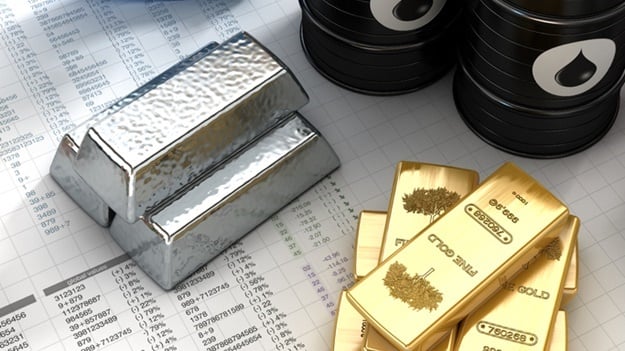
- Commodities such as the platinum group metals, copper and iron ore have seen a dip in prices in recent weeks.
- Mining analysts say the slippage is won't affect local producers, and is temporary.
- Mining has been a significant contributor to the country's GDP, due to higher returns seen by companies.
After surging to record highs in the past year, commodity prices have in recent weeks been pulling back, but the slippage is nothing out of the ordinary.
Although global sentiments such as inflation risks in the US and the indication by China to release stockpile inventories have contributed to the taming of prices, analysts believe that the surge happened too fast and the prices were too high and, therefore, the market could use a breather.
The Federal Reserve forecast last week that it may raise interest rates much quicker than previously expected sent jitters across the markets and saw commodity prices lose steam. Commodity prices are traditionally a leading indicator for inflationary pressures and when interest rates go up, the prices of commodities edge lower.
The cooling off of copper, iron ore and platinum group metals (and to some extent gold) has also raised questions on whether so-called commodity "supercyle" might be nearing the end.
On Tuesday, the copper price at $4 171 per ton was 7.9% lower compared to last month, while iron ore was trading at $210 per ton, down 3.2% from four weeks ago. Palladium and rhodium - whose demand has benefited from the shift by the automotive sector towards lower carbon emissions vehicles - have also seen a decline in prices in the last weeks, with the global demand outstripping supply.
Platinum, which had hit a year-high of $1 292 per ounce earlier this year, on Tuesday traded at around $1 080, in what is still a good price compared to the average prices in 2019 and 2020, before the upcycle hit.
"I think this is a very healthy correction," said René Hochreiter, a mining analyst at Noah Capital.
He stated that there was nothing wrong with the currently slight dip as local miners were still reaping the rewards of higher prices and were in a far better financial position than the years before.
"We are still in a supercycle ... and supercycles usually last an average of ten years. The correction is incredibly healthy, as the resources were starting to look like bitcoin, and that is not good," said Hochreiter.
Supercycle intact
Rocketing platinum and palladium prices, and solid output growth handed Sibanye-Stillwater record results in the first quarter of 2021, with the firm reporting a 78% increase in adjusted profit to R19.8 billion before interest, taxes, depreciation, and amortisation (Ebitda), compared to the same period a year before.
Sibanye is the world's largest producer of platinum, second-largest producer of palladium and third-largest producer of gold.
The company is now expanding its footprint into the lucrative battery minerals market, which is another metal that has seen a sharp surge in demand.
Hochreiter stated that the movements is prices could be due to excess of production on the market and the upcoming year-end, but the demand is still the same.
His sentiments were echoed by Peter Major, mining analyst at Mergence Corporate Solutions, who believes that the slippage in commodity prices is "nothing out of the ordinary" and pose not risk to producers.
On Friday, copper - which has been a star performer over the past year thanks to its recovery in key markets such as China - declined 1.8% to close at $9 119.75 per million ton, while aluminium closed 1.4% lower at $2 375 per million ton.
"Our producers have never had it this good, even with the slippage. We are still firmly in a supercycle," said Major.
"The prices are still in a range not seen before and companies have not seen this prices even back in 2008."
There had been four supercycles in the past, and the first one was in the early 1900, when the US in entered the industrialisation phase. The second cycle came after the World War 2, followed by the energy-driven round in the 1970s; then came the China-driven supercycle of the early 2000s.As the biggest consumer of commodities, China's indication at releasing stockpiles to the market could be read as a sign of reducing its exposure to commodity markets. But what is clear from the economists is that the South African companies and the economy will not be impacted by the price pullback. The mining sector has been a significant to GDP growth seen in the first quarter, as companies contributed higher taxes to the fiscus.
